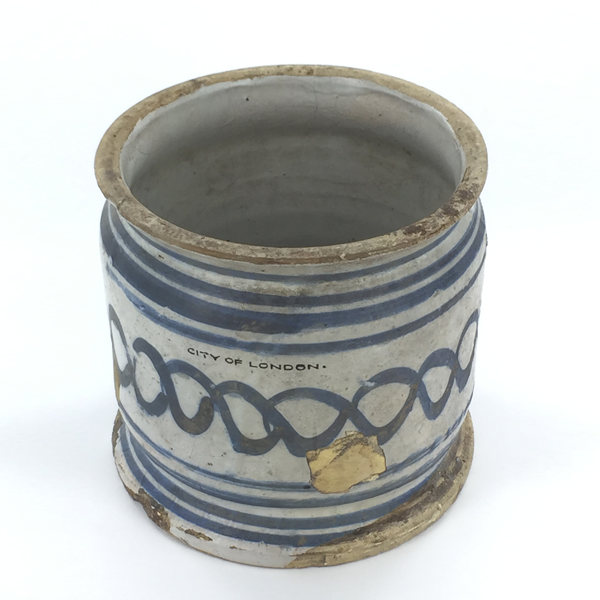april, 2019
Details
The Guildhall collection was donated to TMAG by the City of London in 1938. It contains archaeological material excavated from the centre London – for colonial Australians the heart of
Details
The Guildhall collection was donated to TMAG by the City of London in 1938. It contains archaeological material excavated from the centre London – for colonial Australians the heart of empire and the embodiment of ‘home’. This collection raises problematic issues around nation, histories, identity, place, space & displacement.
BACKGROUND
The Guildhall collection was donated to the Tasmanian Museum and Art Gallery in 1939, at the request of the then Governor of Tasmania, Sir Ernest Clarke (1864-1951). In the previous year the Guildhall Museum of the City of London – now the Museum of London – had donated a collection of objects to the City of Sydney to mark that city’s 150thanniversary. Similar collections had been donated to St John’s (New Brunswick, Canada), Otago (New Zealand), and three other Australian cities, Adelaide, Melbourne and Perth. Sir Ernest Clarke’s letter to the Guildhall is quoted in the Mercury of 12 January 1939;
“… such gifts are of great historical and educational interest and are especially valuable to a community so far away as our isolated State. If the Corporation of the City of London could further add to their patriotic actions by sending a similar gift to the Tasmanian Museum at Hobart, the Government and the royal Society of Tasmania would be most grateful. Such a gift would cement the ties of Empire between widely separated units of the British people, for the Tasmanians are a loyal and devoted people, almost exclusively of pure British race, and they already have a deep and reverential regard for your great city”
The newspaper further reports that the objects were all excavated in the famous ‘square mile’ of central London and spanned a period of ‘some 1,500 years’. The objects in the collection are emblems of a displaced history felt by many Australians in the 19th and early-to-mid 20th centuries. Still loyal subjects of the Empire, they felt that the greater part of their history belonged to another place, a place that by 1938 many of them had never seen. This collection, so closely associated with that distant ‘home’ was an opportunity to have material evidence in the form of relics of the history of British Tasmanians stretching beyond the brief 135 years of local history, dating from the invasion of Tasmania in 1803.
Image: Maker unknown (United Kingdom). Apothecary jar, Late 18th century, glazed earthenware
Presented by the Guildhall Museum
P1939.60
Time
April 29 (Monday) 10:00 am - December 31 (Tuesday) 4:00 pm
Location
Tasmanian Museum and Art Gallery
Dunn Place, Hobart

